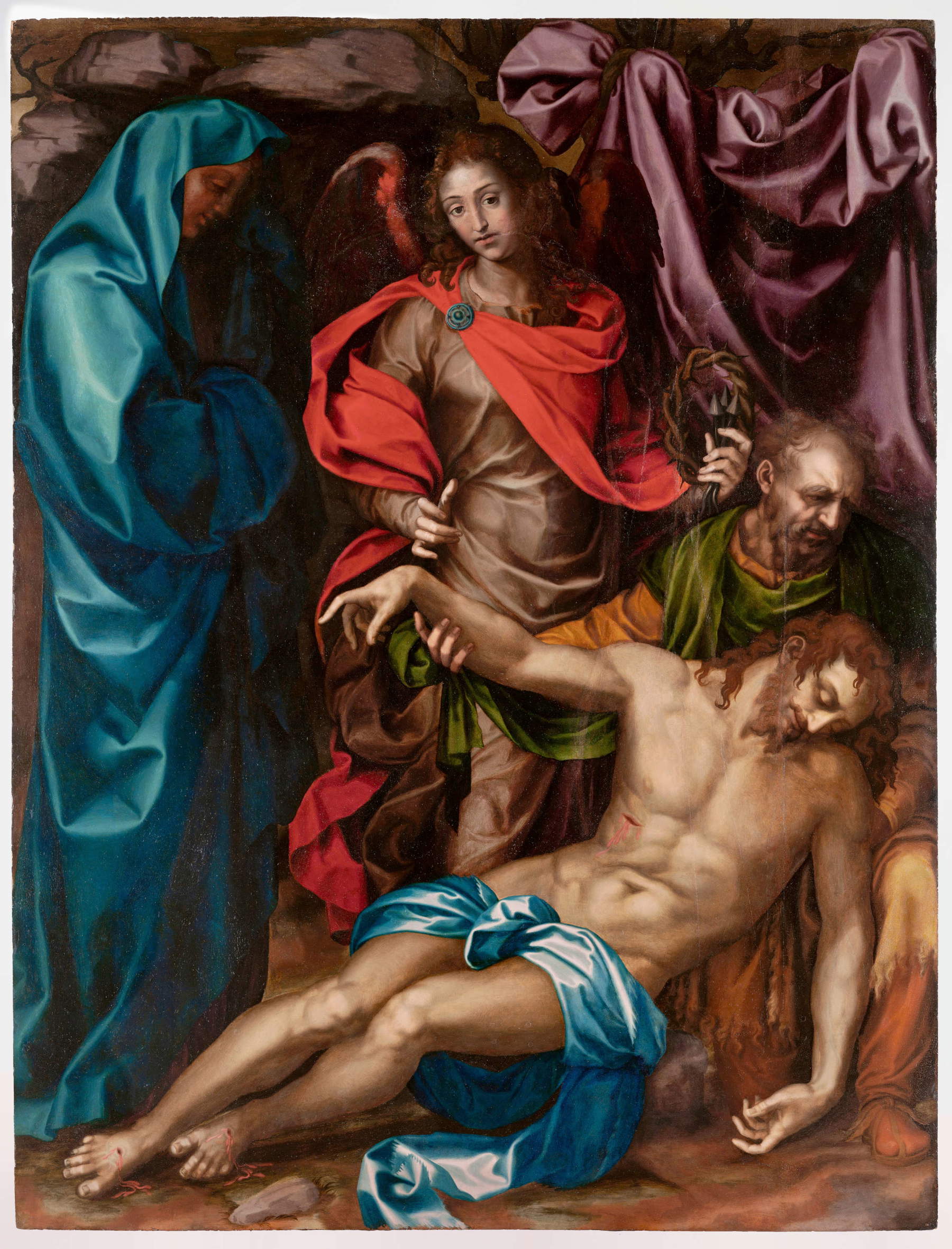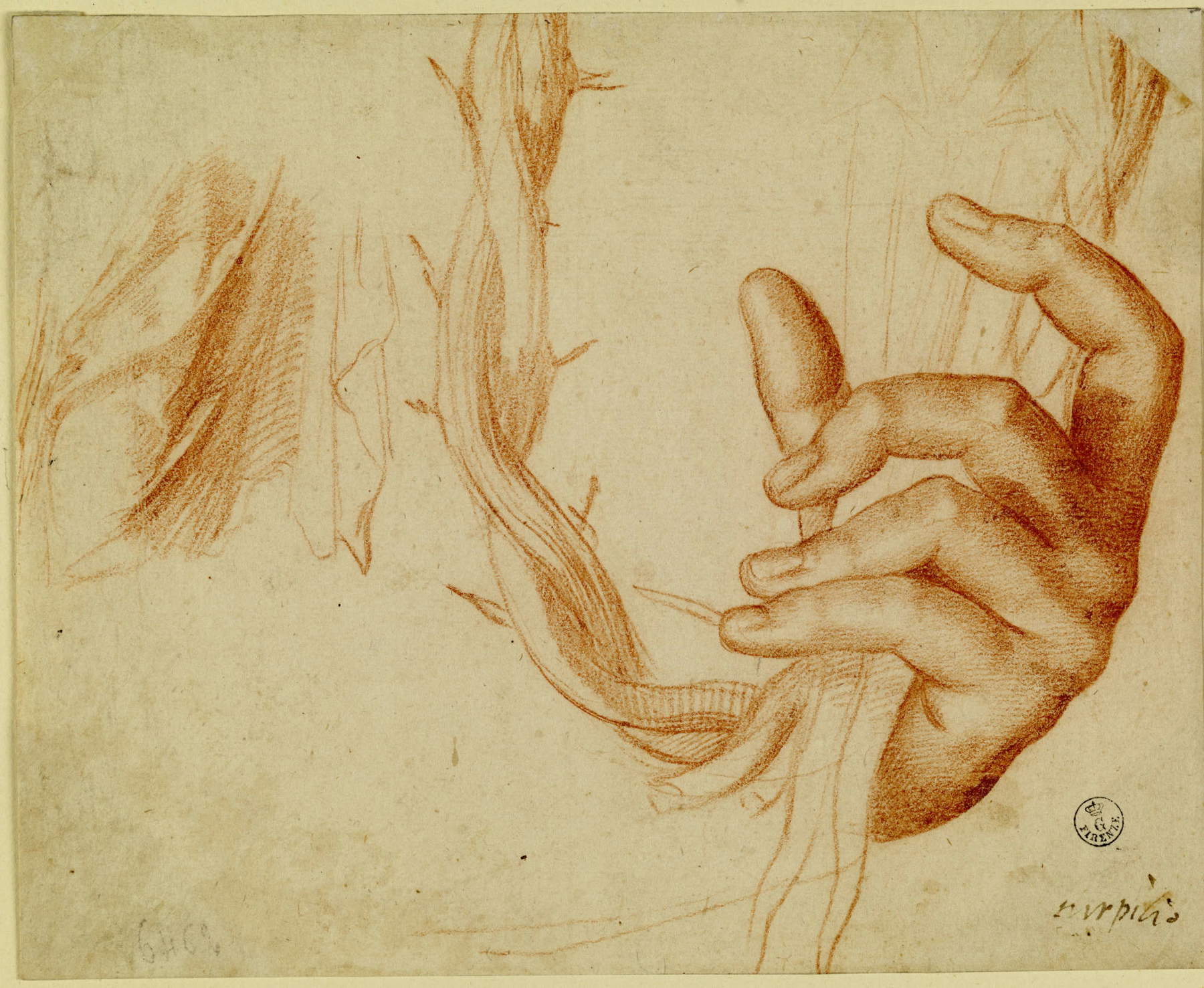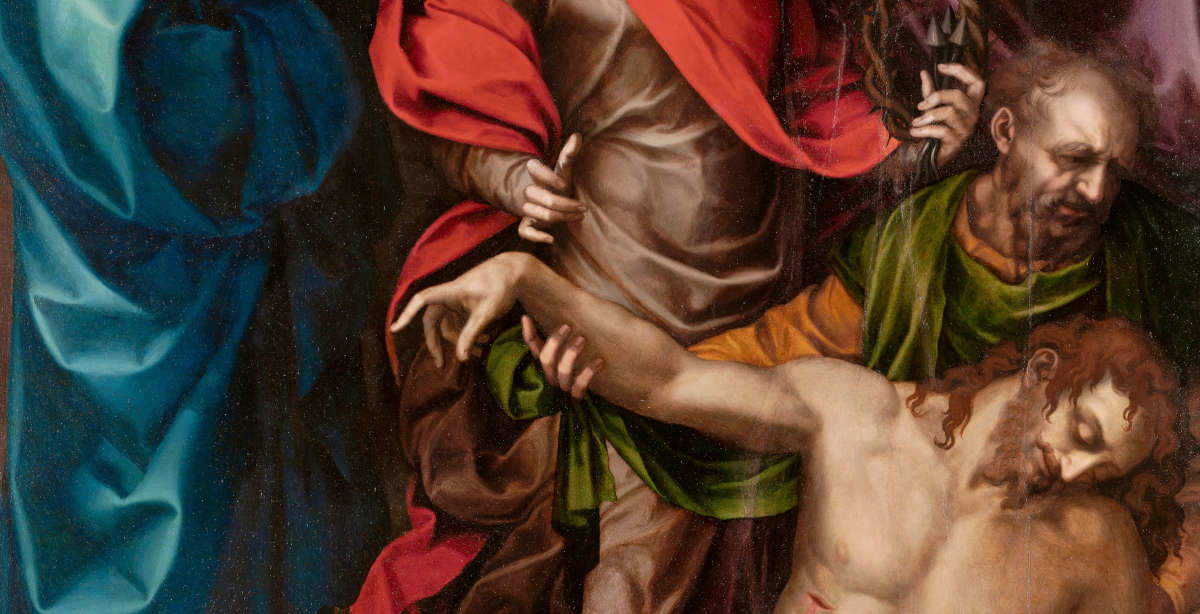A rare painting by Baccio Bandinelli thought to be lost is found. Exhibited at the Uffizi
A rare unpublished painting by Baccio Bandinelli (Florence, 1493 - 1560), thought to have been lost, has come to light again: it was found in the Vatican Museums’ storerooms, and after restoration is being exhibited for the first time in Florence, at the Uffizi. The painting is a Pietà, with the Virgin, an angel and Nicodemus , which from today until February 25 is the protagonist of the exhibition Baccio Bandinelli painter, the result of the collaboration between the Uffizi Galleries and the Vatican Museums (theexhibition, curated by Uffizi director Eike Schmidt and the Vatican Museums’ director of Renaissance and Baroque art Fabrizio Biferali, is housed on the second floor of the Vasarian museum, in the spaces between the Leonardo Room and the Michelangelo and Raphael Rooms).
The work, an oil on panel of which two preparatory drawings are preserved at the Uffizi, in the Gabinetto dei Disegni e delle Stampe, testifies to the artist’s adherence to the models of Pontormo, Rosso Fiorentino and Bronzino, and is displayed in the exhibition that the public finds at a distance from the famous sculptural group of Laocoon, a copy made by Baccio Bandinelli of the original kept in Rome’s own Vatican Museums: Bandinelli’s version now in the Uffizi closes the perspective of the Third Corridor before the terrace.


The existence of the Vatican Pietà has been known for centuries, to the point that Giorgio Vasari in his Lives counts the painting among Bandinelli’s works, describing the “Christ deposed from the cross held in the arms of Niccodemus, and his Mother standing weeping for him, et un Angelo che teneva in mano i chiodi e la corona delle spine.” The canvas, which as mentioned was thought to be lost until its recent discovery in the deposits of the Vatican Museums, is a rare example of Bandinelli’s activity as a painter and has many stylistic and formal affinities with his other sculptural works in Florence (the two Pietàs in Santa Croce and Santissima Annunziata). After a complex process of restoration, the Pietà in the Vatican Museums is finally exhibited together with a drawing of a detail, preserved in the Gabinetto dei disegni e delle Stampe of the Uffizi (a supreme example of Bandinelli’s extraordinary gifts in graphic art) and the Creation of Eve and at the Expulsion from Paradise, by the Florentine painter Andrea del Minga. The two pendants executed to a design by Bandinelli and donated to Eleonora di Toledo are now part of the collection of the Palatine Gallery in the Pitti Palace.
“Bandinelli reveals, like Michelangelo, an extraordinary ability to ’sculpt in painting,’ preferring form and design and using the seductions of color as a mere accessory,” says Eike Schmidt, director of the Uffizi. “We find in this painting all the strength of the chisel and a search for volumes that takes us back to the reliefs for the Duomo choir. This is precisely why the exhibition in the spaces adjacent to the hall of the Doni tondo, where Buonarroti painted the sacred group and figures as if they were polychrome sculptures, is particularly significant and allows the visitor a very useful comparison.”
“It is an honor,” says Barbara Jatta, director of the Vatican Museums, “to be able to worthily celebrate an artist who was Florentine by birth, but Roman and ’Vatican’ by adoption, a master who knew along the span of his production how to fuse with ease quotations from the modern and the ancient, becoming himself, like other giants of his era, a classic and a model to be imitated.”
 |
| A rare painting by Baccio Bandinelli thought to be lost is found. Exhibited at the Uffizi |
Warning: the translation into English of the original Italian article was created using automatic tools. We undertake to review all articles, but we do not guarantee the total absence of inaccuracies in the translation due to the program. You can find the original by clicking on the ITA button. If you find any mistake,please contact us.



























